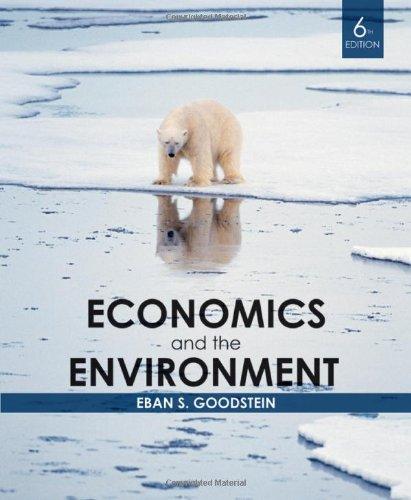Suppose that you are in charge of the demand-side management program at Megabucks Power, and your state
Question:
Suppose that you are in charge of the demand-side management program at Megabucks Power, and your state public utility commission has just decided that you can now count energy-efficiency measures as equivalent to investments in new generating capacity.
This means you can recover efficiency investment costs plus a normal profit through higher electric rates for your customers.
You have the following information at your fingertips: Megabucks currently produces 1 billion kWh and anticipates needing another 100 million next year to service new residences. You are currently charging $0.05 per kWh; new generating capacity
(a coal plant) would come in at $0.06 per kWh. Buying the coal plant would mean Megabucks could sell 1.1 billion kWh for an average price of $0.0509 per kWh [$0.0509 per kWh = (1 b kWh ∗ $0.05 per kWh + 0.1 b kWh ∗ $0.06 per kWh)/1.1 b kWh)]. Fortunately, there is a CT at hand. It is possible to reduce demand by 100 million kWh through a program that weatherizes one-quarter of the (identical) houses in your service area. Best of all, weatherization can be obtained at a cost of only $0.03 per kWh or an overall investment of $3 million [$3m = 0.1 b kWh ∗ 0.03 per kWh].
Your challenge: Which of your customers pays for the $3 million program?
Your assistant, Mr. Offthecuff, has a plan. ‘‘Let’s select one-quarter of the houses at random and provide the weatherization service for free. We can recover the costs by raising electricity rates for everybody. Overall, our customers will be better off since collectively they will save $3 million’’ [($0.06 − $0.03) per kWh ∗ 0.1 b kWh].
Good idea?
Step by Step Answer:







